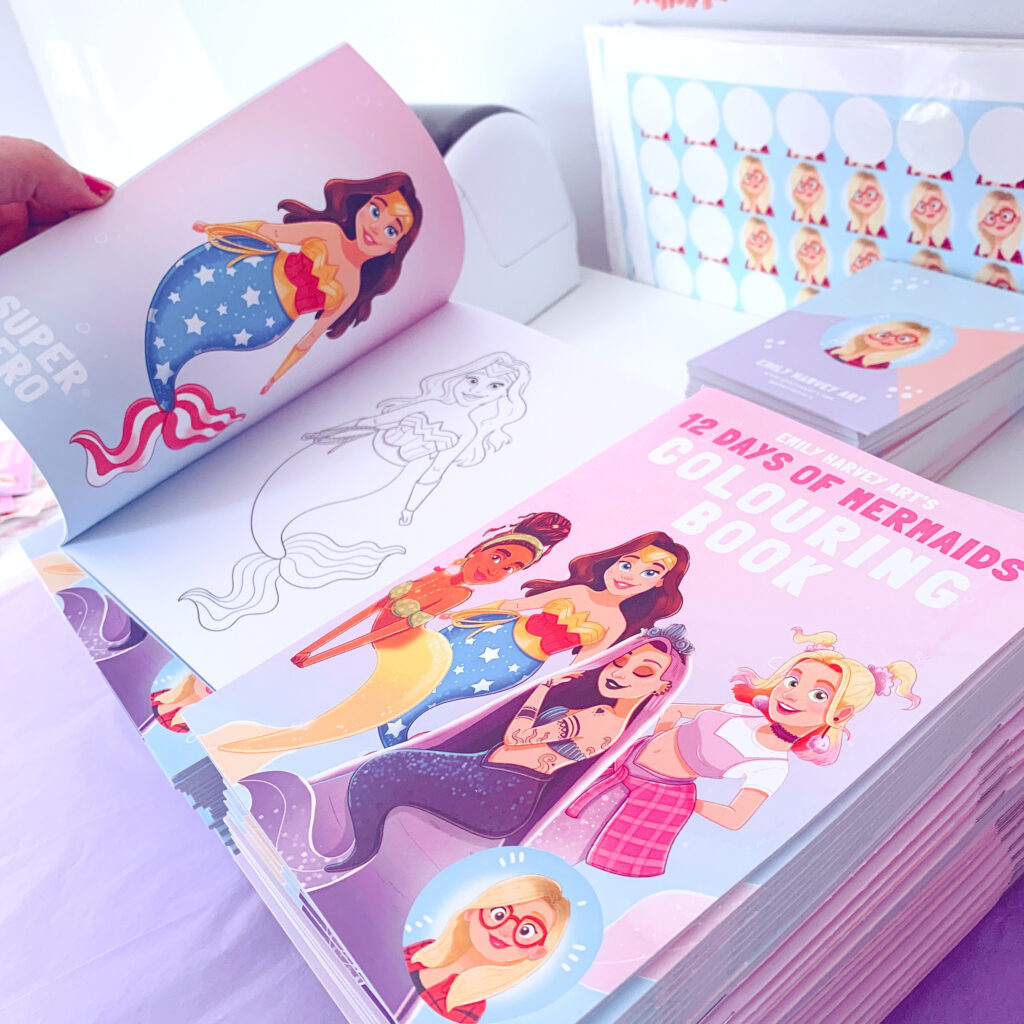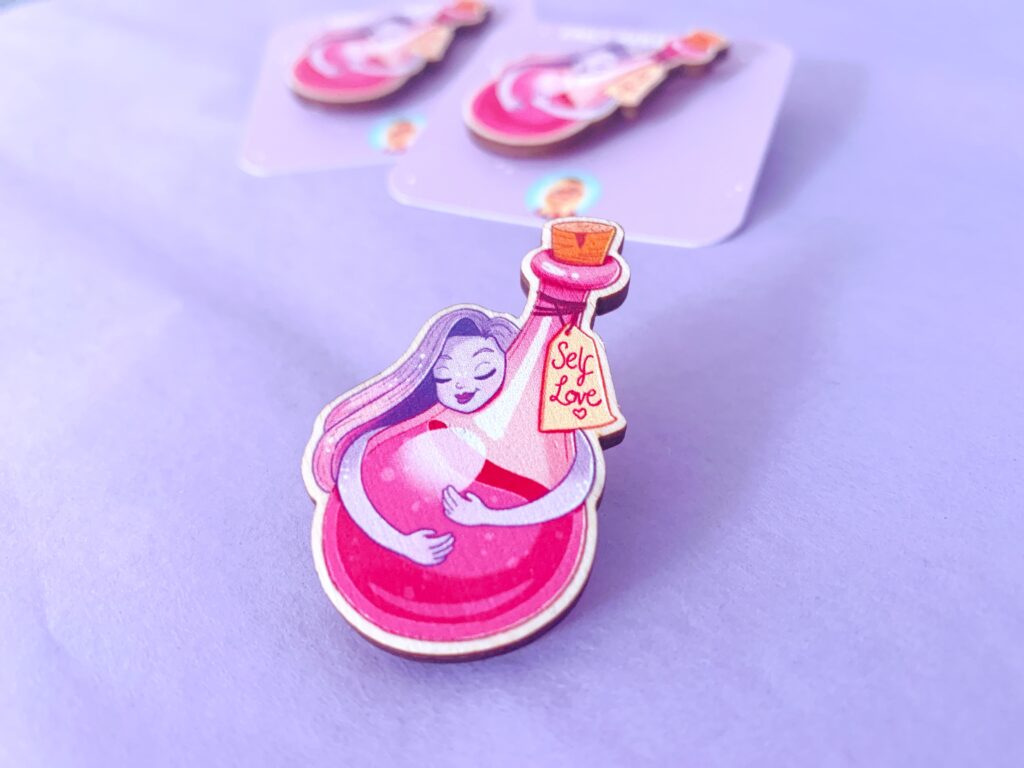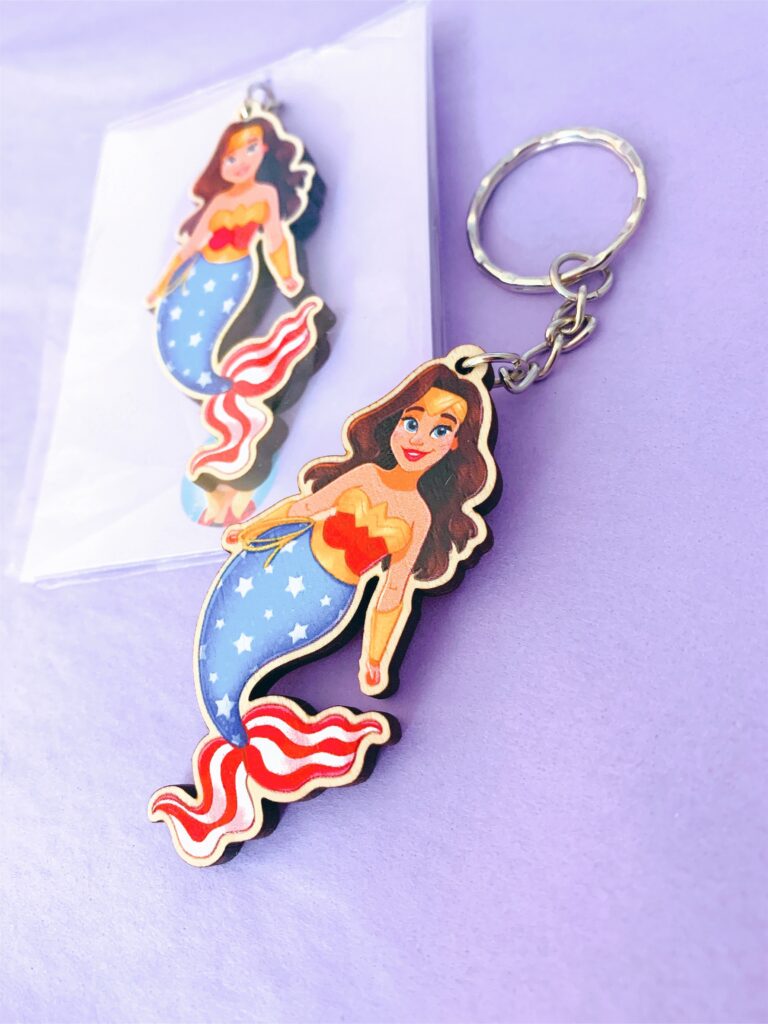Want some inspiration for making brilliant videos for your business? We wanted to ask an expert, so we spoke to Emily Harvey of Emily Harvey Art, an illustrator, vlogger, Patreon channel owner and Mum to lovely Luca, about how and why she creates her video content for her small business.
Making brilliant videos for your business with Emily Harvey
Check out her IG Live interview on this topic with Pedddle founder Nicki:
Here’s the highlights…!
Nicki at Pedddle: How do you overcome the fear?
Emily: My brother suggested setting up a camera and talking about the choices I made while drawing. I started by doing a screen grab and just talking about the process, then the next few videos were drawing tips ones.
I didn’t script them but I was much more relaxed as I knew the product and process so well, then eventually I expanded and wasn’t so afraid of the camera!
Nicki: When I started filming video content for Pedddle, planning it first definitely helped for me – writing out the bullet points you want to cover. You can still film it freestyle but having an idea of what you want to say really helps.
Emily: If you’ve never done video or any IG Lives, I’d start with a behind the scenes. You don’t need to talk if you don’t want to – a time lapse is great as it gives a behind-the-scenes insight, or show your workspace and talk over the top. Take a selfie and type something, or show a behind the scenes video and talk over it – it doesn’t need to be you talking on camera to begin with, you don’t have to dive straight in if you’re nervous – work your way up to it.
Nicki: A time lapse is definitely a great idea – show setting up your stall, you working or making a product. It’s just about seeing a snippet of your business. If you put time lapses on your grid it shows the views too, so it looks like you’ve got good viewer engagement. Chat it through with a friend for a practise run.
If it’s less than a minute it’ll go to your Instagram Stories, if it’s over a minute it’ll go to IG Live.
Emily: I guarantee your first few videos will not be perfect. There’s a fear of IG Lives and YouTube, but your confidence will grow over time. People are often put off by the idea of not many people watching their first few videos – but that’s ideal as you need to find your feet and grow your confidence anyway before you’re put in front of a huge audience! Don’t be afraid of how you look or of being judged – people want to know your story, it’s a massive benefit to show your face.



Nicki: People never judge like you think they will – the creative community is so full of help and support and love.
Emily: The people I thought would comment or make digs often end up being the biggest supporters – if anything, people usually message you saying that you’re brilliant and giving you support, you just need to confidence to try!
Nicki: What tools do you need to get started?
Emily: For the first year I just used my phone! I then uploaded the videos to my computer and edited them on iMovie. I’ve now moved to a camera, but a phone is still great and does everything you need!
TIPS for using a phone or iPad – do NOT look at the screen when you’re filming!
You HAVE to look at the camera. Otherwise you’ll love the connection with your audience as you won’t be looking directly at them. The back camera is generally better quality, and will help you not get distracted by looking at your screen. You’ll get much better quality footage from this.
Caption your stories (especially for Insta) – this is SO important. Type out what you’re saying, and then you will appeal to people who find it hard to listen (if they’re hard of hearing, their phone is on silent, they aren’t a native English speaker or if you have a strong accent). Type out your stories too – it will take a few extra minutes but it’s well worth it.
YouTube enables you to set captions on your video and so will add captions for you automatically, which also helps.
I also have a tripod stand to support the camera. If you film a stall set up this is handy, and when you’re sitting down filming at home or in the office it’s really helpful.
Nicki: Do you use any other editing software?
Emily: I used to use iMovie but you can only do it in landscape. When I do Instagram stories I tend to just go live and if I mess up it doesn’t matter – it is what it is! There are apps like Splice (Nicki loves this), and I make small edits on my computer for YouTube. Insta splits videos into little chunks, so I can always delete a chunk if I’ve messed up badly.
Nicki: Splice is great, I document market trips and I find Splice lets you take a video as square, landscape or portrait, so it’s ideal for uploading on various platforms and maintain good quality. It’s about £66 a year – so it’s only worth the investment if you’re doing video content often.
Nicki: Which platforms are best?
Emily: I think YouTube is the second biggest search engine, so it’s definitely something to aim for. When I was starting and if I was stuck for ideas, I looked through YouTube for other ideas. Whatever you do, you can inspire somebody, it doesn’t matter how big your following is.
Behind the scenes, tips videos, how-to videos – it’s really made a huge difference to my business and it’s amazing to be able to show people behind the scenes and into your business. My ‘Craft Fair Tips’ video is super popular, and I didn’t have loads of knowledge I just went for it.
Nicki: Documenting your day at market is a great idea, setting it up and as the stall changes throughout the day.
If you’ve got a website you can embed the video on your website in a blog, giving you purposeful content and helping your SEO. Google will recognise your content getting engagement so this can help in various ways.
Nicki: I always use the standard 30 hashtags in posts – do you use them on videos?
Emily: You can add keywords to your YouTube videos which is similar to the hashtag system. Check out Pedddle’s blog on hashtag ideas here.
Nicki: How did you grow your subscribers on YouTube?
Emily: Initially I had about 30 subscribers and for the first 6 months I just kept going. From May last year to last Christmas I finally reached 1000 subscribers. When you hit 1000 you can start monetising your YouTube channel, and it spiralled from there! I now have about 4000 subscribers. I document my week, talk about my highs and lows each week, then upload each Friday. I add a video each week and put tips videos out a lot – Instagram tips, Patreon tips, stallholder tips, craft tips and much more!
Emily’s Top Tip: Set a topic & talk about it – if you do a Live and nobody turns up, DO NOT PANIC!
You can still use the video. Keep talking throughout, then if only 1 or 2 people turn up they won’t feel pressured to engage. Have a plan, talk as though it’s full of people and people may join along the way. Don’t just sit still – start talking from the beginning! Sometimes you can’t see everyone that’s joined anyway, so launch straight into your topic and go – don’t wait for people to join and then they’ll feel more comfortable when they do.
Emily has over 4000 subscribers to her YouTube channel, in just a year!! You can follow her on YouTube here.
Emily has lots more exciting things coming up, so don’t forget to subscribe to her YouTube channel to follow her journey!



mermaid keyring